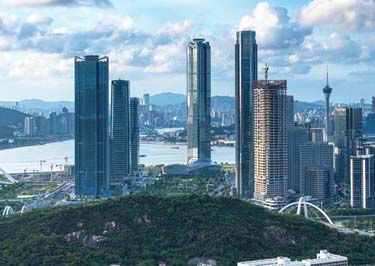The Mok Family
1
Three generations of a Chinese family served as compradors of Taikoo Sugar Refinery & Dockyard (Butterfield & Swire Co), the largest British firm in Hong Kong, for 61 years between 1870 and 1931.
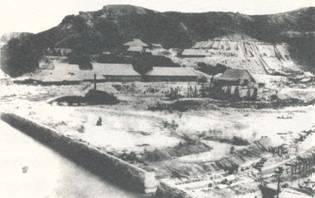
Taikoo Sugar Refinery & Dockyard (Butterfield & Swire Co) in 1884
The family helped the company, known today by its "hong" name Taikoo meaning "Great and Ancient" -- amass a large fortune through shipping, sugar refining, shipbuilding, insurance, and foreign trade and became the largest comprador clan in China's history.
They were Mok Si Yeung, or Mok See Yong (Mo Shiyang), Mok Cho Chuen, or Mok Chou Cheung (Mo Zaoquan) and Mok Kon (Kan) Sang (Mo Gansheng).
2
The Mok Family originated in Huitong Village of Tangjiawan Town in the 1920s.
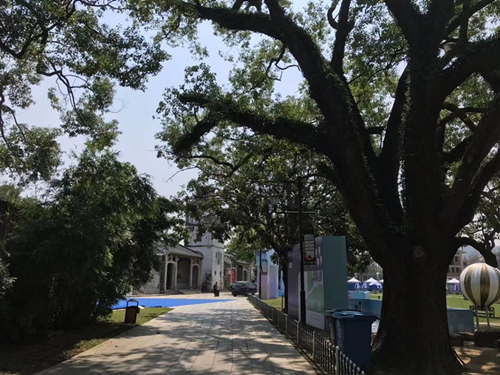
Century-old trees at entrance of Huitong Village
Hong Kong was then the Far East headquarters of western multinational firms engaged in Chinese trade. Knowing little about China or how to deal with Chinese people, westerners turned to the Chinese for help, which gave birth to the comprador system.
Proximate to Hong Kong and Macao, Zhuhai became the cradle of compradors.
3
First-generation Mok Si Yeung was nominated as the first comprador of Swire in 1870. Upon his death 10 years later, his second son, Mok Cho Chuen, took the post and remained there for 37 years. Mok Cho Chuen was succeeded by his first son, Mok Kon-sang, who worked for 14 years until the system was terminated in China.
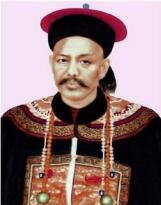
Mok Si Yeung, or Mok See Yong (Mo Shiyang) [Photo courtesy http://mokancestry.com]
Collecting silk and tea in inland areas for export and buying back industrial products from Britain and India for China's firms to retail, the Mok Family helped to make Swire the wealthiest foreign firm in Hong Kong.
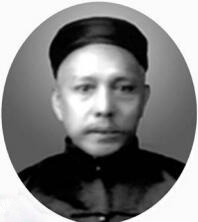
Mok Cho Chuen, or Mok Chou Cheung (Mo Zaoquan) [Photo courtesy http://mokancestry.com]
4
The Moks contributed largely to establishing Swire's dominant position in China's shipping industry.
For instance, the Mok Family eliminated competition from the US Russell & Co in three years relying on close relationships with Chinese firms. They monopolized the supply of goods, dominating the shipping market with British Jardine, Matheson & Co, and China Merchants Steam Navigation and taking a market share of 35 per cent.
Swire's Shipping Department was then reorganized. In the process, west coast Guangdong and Xijiang River courses were extended, and a 3,000-dwt ship purchased every two or three years. In the early 20th century, Swire's "black chimney" ships were sailing in coastal cities from Dalian, Tianjin, and Andong to Beihai, Haikou and Vietnam; to Jiujiang, Wuhan, and Chongqing along the Yangtze River; and to Jiangmen, Zhaoqing, and Wuzhou on the Pearl River.
Afterward, ocean shipping was extended to Southeast Asia, Oceania, Europe, and America with 60 ships in service. Swire’s ships had gone global from China.
5
The Mok Family branched out Swire in Guangzhou, Shantou, Xiamen, Fuzhou, Qingdao, and large cities along the Yangtze River as the business expanded.
Meanwhile, Swire’s Insurance Branch was established in Hong Kong to cover marine and fire losses.
Due to the tremendous efforts of the three generations, Swire’s insurance range was extended to property and life and coverage expanded to inland China and Southeast Asian countries.
Insurance had become Swire’s second pillar industry in Hong Kong.
6
The Mok Family was engaged in developing industrial production with strategic vision.
They bought large seaside areas in Hong Kong at low prices and founded Taikoo Sugar Refinery, Taikoo Boatyard, and other large production plants.
The refinery, surpassing the quality of Japan’s sugar products through a new way of refining, maintained the predominance of the British sugar industry in the Far East.
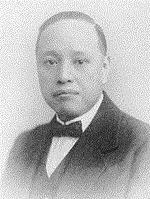
Mok Kon (Kan) Sang (Mo Gansheng) [Photo courtesy http://mokancestry.com]
With thousands of employees, the boatyard provided maintenance for Swire’s ships and other 20,000-to-30,000-dwt ocean vessels entering Hong Kong with top-notch shipbuilding techniques in the Far East. It also repaired warships and built small and mid-sized vessels for the British Far East Fleet.
7
The Mok Family cared much about their hometown after they themselves had prospered.
They helped some 1,000 relatives in Huitong Village to find employment in Swire over the course of a century.
They developed their hometown with advanced planning. Huitong Village, a fusion of Chinese and western styles, has remained a masterpiece of Lingnan folk architecture.
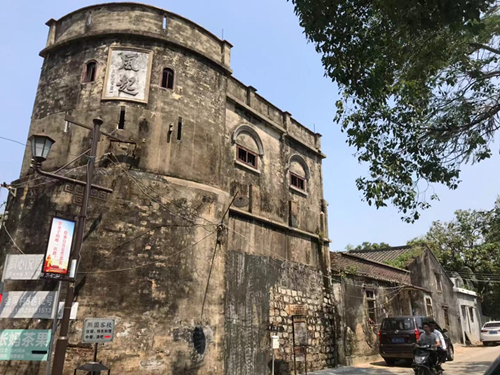
Wind Rising Watchtower
They accumulated up to HK$100 billion but spent heavily on a power generator and tap water facilities. They paved the way for the village to access modern civilization.
8
The Mok’s abstinence hall, also known as “Qixia Nunnery,” was built by Mok Ying Chow, a grandson of Mok Si Yeung, in the west of the village. Named Qixia (literally Nunnery Where the Sunglow Perches), the nunnery was built in memory of his deceased wife, Zheng Yuxia, also dubbed Axia.
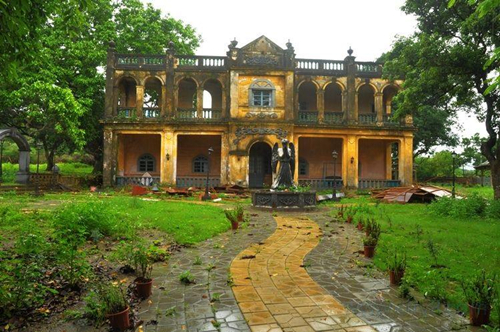
Qixia Nunnery [File photos]
The 400-sq-m arcaded structure features Chinese, Japanese, and Southeast Asian architectural elements, with construction materials imported from Hong Kong and floor tiles from Italy. Decked out on two floors, the building originally included a sutra hall where resident nuns chanted during the daytime for the peace of Axia’s soul.
The structure, nonetheless, has been turned into a coffeehouse where young romancers can lament over the love story and envision their own future.


